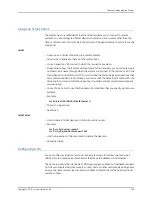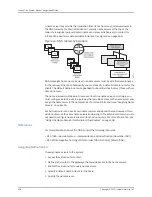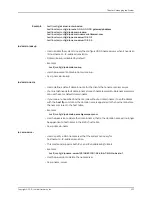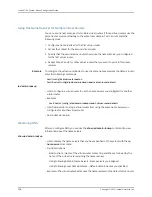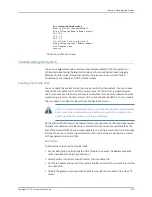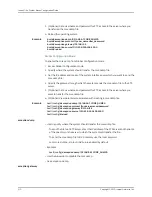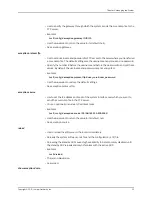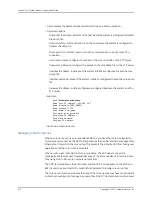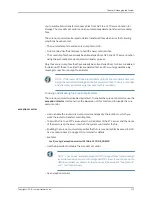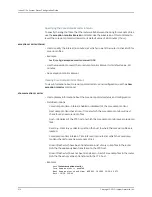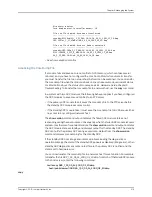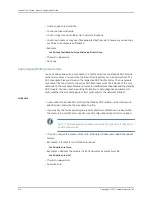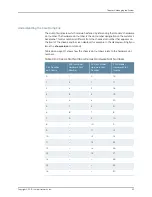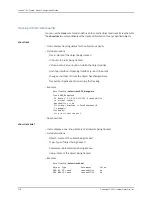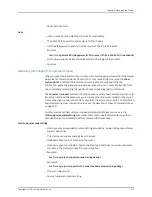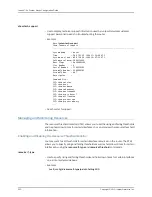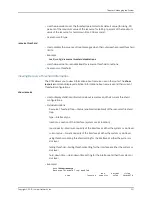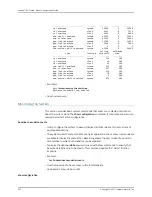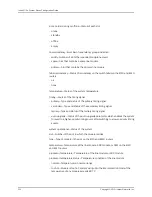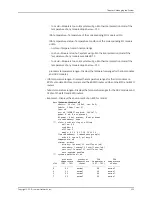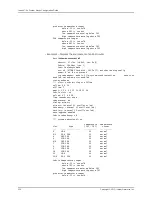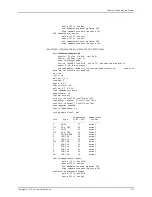
•
Use to display the parameters associated with the core dump operation.
•
Field descriptions
•
Dump host IP address—Address of the host where the system is configured to transfer
the dump file
•
Dump directory—Name of directory on the host where the system is configured to
transfer the dump file
•
Dump protocol—Protocol used to send the core dump file; currently only FTP is
supported
•
User name—Name configured for access to the core dump file on the FTP server
•
Password—Password configured for access to the core dump file on the FTP server
•
Interface IP address—Address of the system interface configured to send the core
dump file
•
Interface netmask—Mask of the system interface configured to send the core dump
file
•
Gateway IP address—Address of gateway configured between the system and the
FTP server
•
Example
host1#
show exception dump
Dump host IP address: 192.168.56.7
Dump directory:CORE_DUMPS/
Dump protocol: FTP
User name: user_name
Password: user_password
Interface IP address:
Interface netmask:
Gateway IP address:
•
See show exception dump.
Managing Core Dump Files
When a core dump occurs on a redundant SRP and you have the router configured to
store network core dumps, the SRP that experiences the trouble retains the management
Ethernet port to perform the core dump. This prevents the standby SRP from taking over
operations until the core dump is complete.
When a router uses local NVS to store a core dump, the SRP does not need the
management Ethernet port. However, because of the immense size of local core dump
files, using NVS to store core dumps is not practical.
The SRP-120 available on the E120 router and the SRP-320 available on the E120 and
E320 routers has a second NVS card which is dedicated to storing core dump files.
The core dump monitor eliminates the impact that core dumps may have on redundant
routers by allowing you to manage core dump files in NVS. The core dump monitor allows
Copyright © 2010, Juniper Networks, Inc.
312
JunosE 11.3.x System Basics Configuration Guide
Summary of Contents for JUNOSE 11.3
Page 6: ...Copyright 2010 Juniper Networks Inc vi...
Page 8: ...Copyright 2010 Juniper Networks Inc viii JunosE 11 3 x System Basics Configuration Guide...
Page 24: ...Copyright 2010 Juniper Networks Inc xxiv JunosE 11 3 x System Basics Configuration Guide...
Page 32: ...Copyright 2010 Juniper Networks Inc 2 JunosE 11 3 x System Basics Configuration Guide...
Page 146: ...Copyright 2010 Juniper Networks Inc 116 JunosE 11 3 x System Basics Configuration Guide...
Page 166: ...Copyright 2010 Juniper Networks Inc 136 JunosE 11 3 x System Basics Configuration Guide...
Page 432: ...Copyright 2010 Juniper Networks Inc 402 JunosE 11 3 x System Basics Configuration Guide...
Page 488: ...Copyright 2010 Juniper Networks Inc 458 JunosE 11 3 x System Basics Configuration Guide...
Page 524: ...Copyright 2010 Juniper Networks Inc 494 JunosE 11 3 x System Basics Configuration Guide...
Page 554: ...Copyright 2010 Juniper Networks Inc 524 JunosE 11 3 x System Basics Configuration Guide...
Page 566: ...Copyright 2010 Juniper Networks Inc 536 JunosE 11 3 x System Basics Configuration Guide...
Page 588: ...Copyright 2010 Juniper Networks Inc 558 JunosE 11 3 x System Basics Configuration Guide...
Page 613: ...PART 3 Index Index on page 585 583 Copyright 2010 Juniper Networks Inc...
Page 614: ...Copyright 2010 Juniper Networks Inc 584 JunosE 11 3 x System Basics Configuration Guide...
Page 632: ...Copyright 2010 Juniper Networks Inc 602 JunosE 11 3 x System Basics Configuration Guide...








